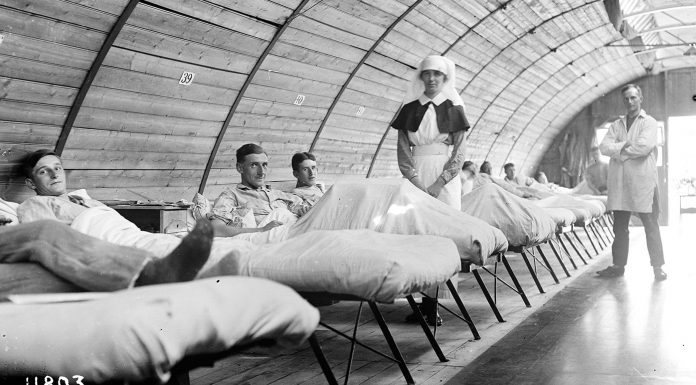For her 65th birthday Carolyn Sengelow dropped down to three shifts a week to leave more time for tennis and her duties as an Anglican deacon.
Fit, healthy, and still passionate about nursing, the long-time widow has no plans to retire or drop rotating shifts as a surgical ward nurse.
“I’m just going to take each year as it comes.”
She is not alone. More than 3000 nurses over 65 are now working in New Zealand, and according to a recent New Zealand Nurses Organisation survey (see sidebar), the older the nurse, the healthier they consider themselves.
But we all age differently and that same NZNO survey also found older nurses who feel trapped.
“I’m in a catch-22 situation. I can’t afford to retire but I’m getting tired and not handling shift work as well as I did when I was younger,” says one respondent. “I have applied for other nursing jobs with regular hours but my age is now against me and there are more applicants for jobs for employers to pick and choose.”
Such employers are likely to be short-sighted, with the tables predicted to turn on them as the recession wanes, turnover rises once again, and many stalwart baby boomer nurses retire. According to the NZNO survey, about a third of all nurses over 50 plan to retire in the next two to five years.
It is an issue that Des Gorman, chair of Health Workforce New Zealand, says is increasingly worrying him.
“If you had to ask me what keeps me awake at night, it is having enough nurses in 2020 to service the needs of sick and elderly New Zealand.”
He points out the ageing workforce issue is not restricted to the nursing or the health sector, with demographic trends meaning the current 5.5 workers per superannuitant is predicted to plummet to two by 2050.
In response countries all over the western world are looking to push the retirement age from current 60–65 to late 60s and beyond.
“We can’t afford to have a workforce where when people turn 50 they become increasingly part-time or leave the workplace. That’s particularly true for the nursing workforce.”
Whether nurses drop out of the workforce at 50 in great numbers is a matter of debate. Nursing Council and Medical Council statistics for 2011 show that for both nurses and doctors the largest numbers were in the age group 50–54. Both professions had roughly 12–13 per cent of their active workforce aged over 60 and both had an average age of 45 (though the average nurse was a smidgeon older at 45.6).
What is not up for debate is that, alongside the need to recruit and retain a new generation of nurses, more and more experienced nurses will be wanting or expected to work up to and beyond the current retirement age of 65.
How do we keep that skill and experience in the workforce? What can be done to keep older nurses healthy and happy to be there?
Not surprisingly the topic is increasingly becoming the focus of research, policy development, and general interest to nurses themselves. Just last year NZNO had more than 3000 respondents to its survey of late-career nurses, leading to a number of recommended strategies for employers wishing to safely retain older nurses.
The EEO Trust has been championing the rights of older workers for some time and employers like Waikato District Health Board took up the gauntlet late last decade to start developing their own policy to meet the challenge of retaining an ageing workforce in which nurses predominate.
The need to feel valued
New Zealand has been slow off the block on the issue of older nurses and has some ground to make up. Midway through last decade, when South Canterbury DHB director of nursing Samantha Powell started considering the topic for her Master’s thesis, she found a wealth of UK and US research on older nurse experiences and retention policy but little to no local research or strategies.
Her interest in the topic was triggered by the fear and vulnerability with which many older hospital-trained nurses greeted the new competency assessment process in 2004.
“I think it prompted me to wonder why they felt so undervalued. They had so many years of experience, so why didn’t they feel like valued team members?”
She set out in 2008 to survey clinical/charge nurse managers (CNMs) at two district health boards on their awareness of the issues facing older nurses and what strategies they used to address them. The response rate was an extraordinary 84.5 per cent – with half falling into the international literature’s definition of an older nurse (i.e. over 50) – and many wanted to share stories.
Powell found the CNM respondents very conscious of the needs of the older nurse but 92 per cent said they were unaware of any targeted policy in their area to help meet those needs.
Many were already using informal strategies to support older nurses, including supporting them with rostering requests and encouraging them to take regular annual leave. Some had even introduced the rule that nurses over 60 didn’t have to do night shift.
“But clearly that isn’t sustainable as the workforce ages. If three-quarters of your ward’s nurses are over 60, you can’t have that rule.”
She found that CNMs were now at the point of wanting some organisational strategy and policy to support them in retaining older nurses on their ward.
“A lack of coordinated response may mean we are at risk of losing valuable experience and knowledge prematurely from what will be a rapidly reducing health workforce,” was one of Powell’s conclusions.
“Retirement of a significant portion of our nursing workforce is under way, and however widely discussed, meaningful co-ordinated action to retain this workforce appears to be lacking.”
Powell believes action is needed on policy to support the older nurse and their managers – just as effort and funding is being invested in supporting new graduate nurses entering the workforce.
Her survey respondents also reported that tension between the generations is a real issue and age discrimination is alive and well. Both issues, she says, need to be tackled at an organisational level by developing a culture that promotes generational tolerance from both sides and doesn’t tolerate ageism. Strategies are also needed to help older nurses deal with the physical demands of working in a high-acuity and high-intensity clinical environment.
Another key is to ensure older nurses feel valued and their wisdom and experience recognised and utilised.
Waikato kicks off ageing policy
Waikato District Health Board started crunching the figures on its ageing workforce – of which about 2600 or almost half are nurses – and it decided to take policy action.
Ruth Ross, workforce change consultant for the DHB, says within a decade the baby boomers (born between 1946 and 1964) would result in an ageing ‘bubble’ in the workforce for some time, with the average age of the workforce potentially peaking at 55 before slowly dropping back again. At the same time globally there would be growing demand for skilled migrant workers.
So it made sense to develop a plan to help support its skilled but ageing nursing workforce to work longer, and after an extensive literature search, the DHB has come up with five strategies to hopefully do just that.
To help identify those most at risk of early retirement – and most in need of those strategies – the DHB has piloted and adopted a European tool called the Work Ability Index (WAI). The confidential WAI questionnaire looks into seven areas, including current work ability, work impairment due to disease, mental resources, and sick leave, to come up with a risk score of ‘poor’ through to ‘very good’. Of the 36 nurses and healthcare assistants taking part in the pilot – the vast majority aged over 46 – nearly all felt psychologically and physically up to their job’s demands, 18 had had one or more accidental injuries, 22 reported musculoskeletal disease or pain, and 19 were provided with a variety of recommendations to improve their health and wellbeing, with seven of those to be followed up further down the track.
Ross says the DHB doesn’t expect to be putting the tool to use much initially, except for staff identified through health and safety services, “but from five years’ time onwards we are likely to be using it an awful lot more”.
Meanwhile work is starting this year in turning the five strategy headings: flexible work, phased retirement options, retaining third age (post-retirement) links, safer work environments (e.g. further reducing manual handling), and health and wellbeing promotion into solid, workable programmes.
“So when a charge nurse manager has a nurse who identifies they are thinking of retiring, there is like a smorgasbord of different options that they can look at together,” says Ross.
At present the options are limited, with reducing hours a common approach.
Family and financial demands
However, older nurses’ needs and desires are more diverse than that. Sue Hayward, Waikato DHB’s director of nursing, says while she hasn’t seen any literature to support Gorman’s concern that high numbers of nurses retire after 50, she is aware demands on nurses’ time can step up post-50.
“Nurses between the ages of 50 and 60 are often having to suddenly look after their parents,” says Hayward. Others find themselves having to raise their grandchildren. “So they reduce the hours they work or make themselves unavailable for work rather than purposefully retiring.”
At the same time there are increasing numbers of nurses working well into their 60s. Hayward says quite often these nurses are the sole income earners and are “very, very mindful” of what they will or will not get through from their super scheme.
“Or they are having to wait for national superannuation, which may or may not be enough for them to live on.”
The ‘smorgasbord’ of options has to be able to cater for those diverse financial, social, and physical needs. Flexible work will be an important one, as Hayward points out that rostering and rotating shifts tend to be an issue for the older nurse. But any alternative work arrangements given the
go-ahead by the DHB have to be piloted and ticked off as not only increasing job satisfaction but also not reducing productivity.
Phased retirement planning is also in the pipeline, along with a strategy – which Waikato human resources general manager Fiona McCarthy says they have coined the phrase “third age” to describe – to offer retiring staff the chance to continue to contribute as mentors or educators so their skills and experience are not lost to the workforce.
Nursing still physically demanding
For those nurses who want to stay on the ward, McCarthy points out that hands-on nursing remains a pretty physical profession.
Ross says the board, in anticipation of the ageing workforce, started more than a decade ago to analyse and reduce the physical load of nursing work and teach proper patient-handling techniques.
Next on the agenda is developing a work analysis tool to identify poor work process, work load, and work flow to reduce the incidence of pain, discomfort, and preventable injury. But health and safety data shows old nurses are far from having a monopoly on injuries, with data showing that DHB injuries from “slips to strains” are spread across the workplace, ages, and professions. Ross says her analysis of sick leave shows that some of its oldest employees use less leave than their younger counterparts.
“That doesn’t mean they haven’t got a bad back and have learnt to live with it, but equally, there’s no evidence to say being a nurse means you are going to have a bad back.”
The depth of loyalty and attitude of older nurses is also an important factor in the low sick leave, says Hayward.
McCarthy adds that, loyalty and strategies aside, it was important to note that some older nurses are no longer physically fit to do the work – particularly in some of the more acute areas. Sometimes even reducing hours or redesigning the job cannot resolve this.
Late-life mortgages, Oz, and ageism
Older nurses are generally a fit, healthy bunch according to the nearly 3300 responses to NZNO’s late-career nurse survey (see sidebar below).
The older they are, the healthier they consider themselves, leaving the research team unsure whether the ‘unhealthy’ nurses have already retired, nurses look after themselves better, or they just see themselves as healthier compared to other people with whom they come in contact.
Most nurses also had positive experiences of being older in the workplace, with the majority feeling empowered to speak out, confident in their skills, and respected in the workplace.
Researcher Leonie Walker says the survey also though provided insight into sad situations of some older nurses still working despite no longer really enjoying nursing or feeling fit and able.
“I think there are quite a lot of nurses who would retire sooner rather than later if their financial situation was better. They are just feeling they cannot retire at present.”
Some had found themselves unexpectedly facing a large mortgage after being divorced or widowed in mid-life. Some had lost their life savings in finance company collapses or lost their home in the Christchurch quakes. Overall nearly 60 per cent of respondents were worried about how they were going to manage financially in retirement and only 18 per cent indicated they had access to financial advice through their employers.
Another trend that emerged to her surprise was the number of older nurses contemplating moving to Australia – 69 made reference to crossing the ditch as part of their long-term plans. Some planned to boost their retirement savings, while others wanted to be closer to their children and grandchildren.
“I’d taken for granted that nurses who were here at 60 would still be here at 65…I think that has some implications for workforce planners.”
What older nurses want
Respondents made it clear that the best thing their workplace could do to support them in their late career was to ensure safe staffing levels – that is, the right skill mix and number of nurses – so they had a manageable workload and felt able to offer safe, high-quality care.
Flexible work options were also popular, which was echoed by the free text comments about increasing difficulties with rotating shift work, and ranked much more highly than workplace aids for lifting or eyesight support. But the majority of shift worker respondents (72 per cent) had no intention of seeking ‘office hours’ in the near future.
When asked what would encourage older nurses to delay retirement, better pay came out on tops – particularly for nurses aged 50–55 – though paradoxically the free-text comments indicated that better pay and retirement savings may lead some to retire earlier.
Next on the list came more appreciation of their work and better access to continuing education. Walker says ageism did come across as an issue for older nurses, who wanted their skills and experience to be valued and not to be dismissed when promotions or further training were in the offing.
“I’d advocate people being taken on their own merit,” says Walker.
After all, you are only as old as you feel. If and when the average nursing age peaks at 55, who’s not to say that “60 is the new 50”?
Ageing Facts
• In 1994 the average age of the nursing workforce was 40.2 years, and just under 3 per cent of active nurses were over 60.*
• By 2011 the average age was 45.6 and nearly 12 per cent were over 60.*
• The percentage of nurses aged over 50 doubled from 20 per cent of the workforce in 1994 to 41 per cent by 2011.
• As at January 2013 there were more than 3000 nurses aged over 65 still practicing (6.1 per cent of active nurses) and 671 of those (1.7 per cent) were over 70.*
• People aged over 65 currently make up 5 per cent of the total New Zealand workforce (130,000) but this is expected to grow to 13 per cent (370,000) by 2036.**
• About 30 per cent of over 65s are expected to still be in the paid workforce by the mid-2020s
(currently 21 per cent).**
*Nursing Council of NZ statistics
**Statistics NZ National Labour Force Projections (updated August 2012)
NZNO Late-Career (50+) Nurse Survey 2012
• 57.2 per cent of respondents intend to retire within next 10 years.
• About 30 per cent plan to retire within next 2–5 years.
• About 45 per cent worked full-time and
• 40 per cent were working shifts (72 per cent of shift workers had no intention of changing to normal hours in the near future).
• Nearly 60 per cent were worried about how they were going to manage financially in retirement.
• 76 per cent had a KiwiSaver plan and 46 per cent had another type of superannuation plan.
• Better pay, more appreciation, and better access to continuing education were identified as the most important contributors to 50+ nurses staying in the workforce.
• Safe staffing topped the list of specific actions workplaces could do to support late-career nurses, followed by flexible work/retirement transition options.
• Kiwi female nurses ranked themselves as ‘significantly healthier’ at all ages in the survey’s health questionnaire compared to the results of the average New Zealand woman.
• There was a clear relationship between a lower health score and plans to retire sooner.
• The older the nurse, the healthier they considered themselves and the less definite they were about when they would retire.
• Nearly 30 per cent of respondents indicated that they faced challenges related to their age and the main challenge areas mentioned were physical, keeping up with technology, and ageism.
** Nearly 3300 nurse members of NZNO aged over 50 took part in the online survey (a 57.6 per cent response rate).
Source: Ageing in place: Retirement intentions of NZ nurses aged 50+ by Dr Leonie Walker and Dr Jill Clendon, paper presented at Labour, Employment and Work Conference, Wellington November 2012. AND Late career nurses in New Zealand by Dr Jill Clendon and Dr Leonie Walker, an NZNO research advisory paper.
NB see also related older nurse case study articles: Taking each year as it comes andNot working ‘might be fun’























